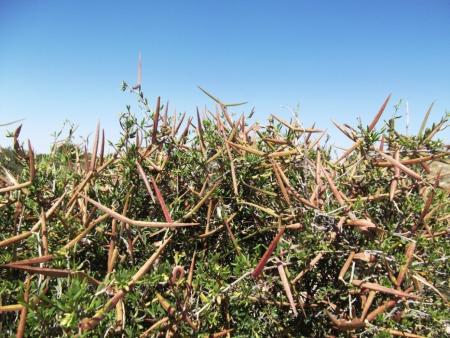
Objective:
The Periploca angustifolia is a native shrub widely distributed in the Mediterranean region. This species is threatened because of its medicinal properties, its pastoral interest and its role in the fight against soil erosion. The main objective of this work is to master the germination and multiplication techniques of Periploca angustifolia L.
Context:
Periploca angustifolia is a largely distributed shrub in the Mediterranean area. It’s located in arid areas of North Africa and Southern Europe. The species has important adaptability in poor and marginal soils. It is adapted to extremely varied water conditions. It can be found in thermophile formations includes maquis and garrigue between 0-400 m altitudes. In Tunisia, it located over a wide area from the Jebel Ichkeul in the North to the Saharan limits in the South (Chaieb and Boukhris, 1995). This work is a part of the project ECOPLANTMED (www.ecoplantmed.eu).
Contacts:
Salma Sai Kachout, salmasey@yahoo.fr, http://www.inrat.agrinet.tn/
Issam Touhami, issam_touhami@yahoo.fr, www.inrgref.agrinet.tn
Khaoula Ben Baaziz, khaoulon@yahoo.fr, www.inrgref.agrinet.tn
Ali Khorchani, ali_el_khorchani@yahoo.fr, www.inrgref.agrinet.tn
Further information:
Chaieb, M. Boukhris, M. 1995. Flore succincte et illustrée des zones arides et sahariennes de Tunisie Association pour la protection de la Nature et d’Environnement, p. 48.